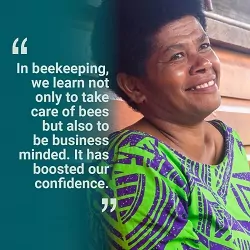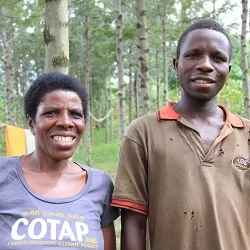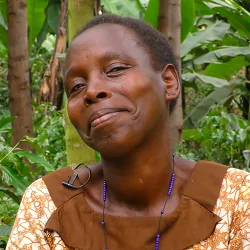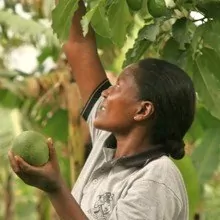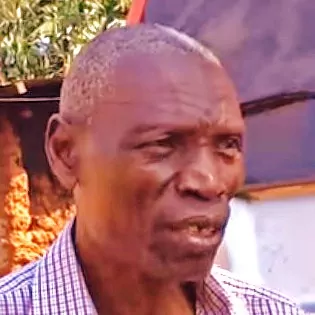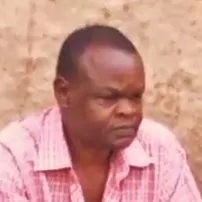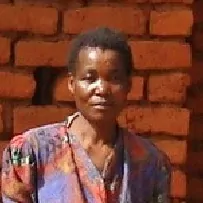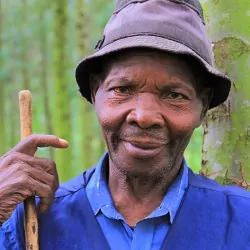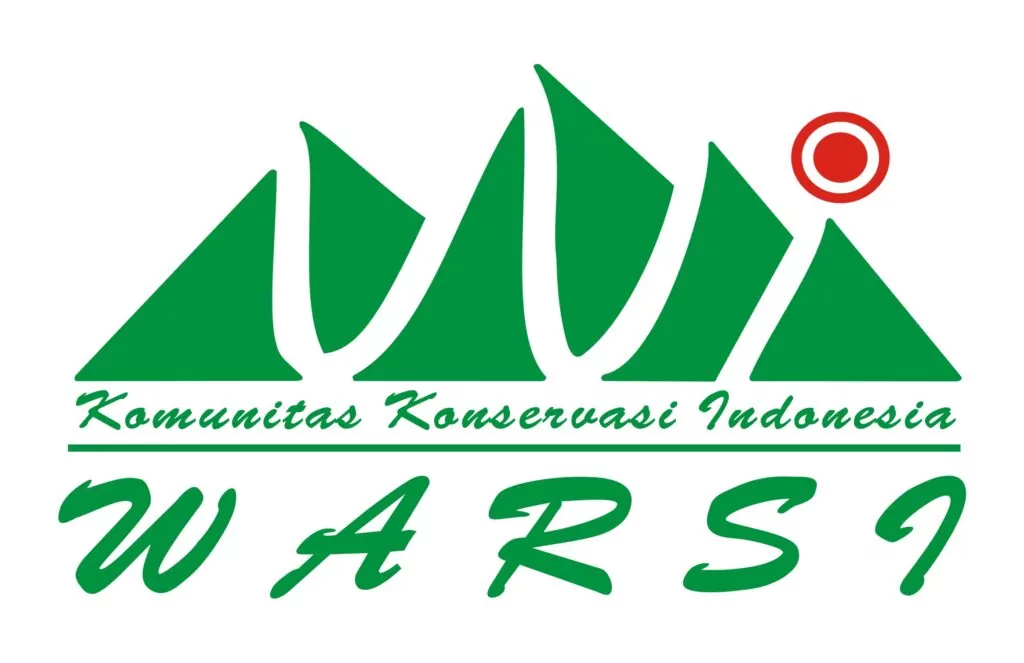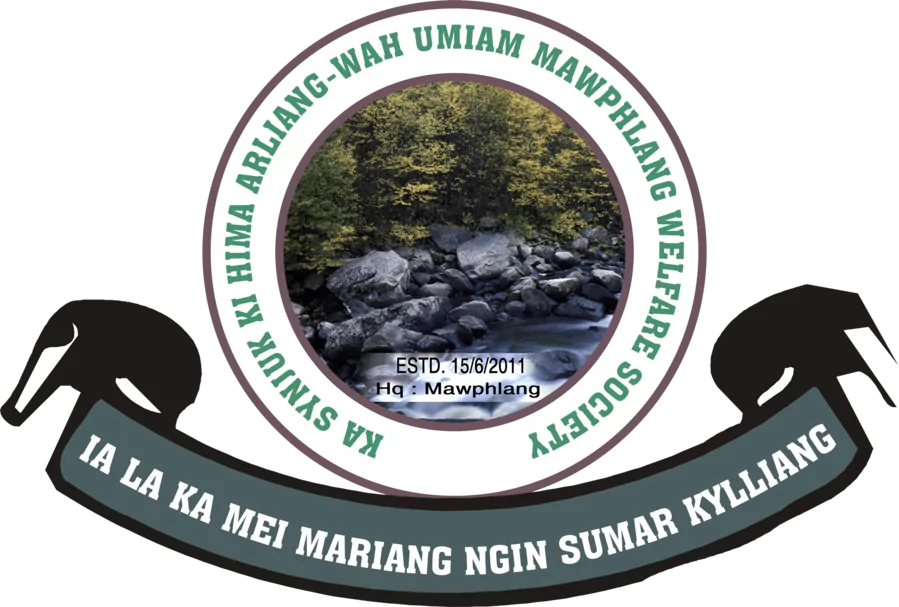(Information on how to offset your CO2 emissions through this specific project can be found at the end of this blog post!)
From May 31 to June 3, I (Tim Whitley) visited our partner Taking Root’s CommuniTree project in Somoto and Limay Nicaragua. For two and half days, I toured a wide variety of project activities like planting, monitoring, and farmer payments. And I also got a to see all the different types of tree planting methods and at all stages – from hole digging and seedling development to 5-year-old tree plantations.
Kahlil Baker, Taking Root’s Executive Director, picked me up and on the 3+ hour ride from Managua to Somoto with our driver Oscar… it RAINED! That’s a huge deal for both the CommuniTree project and Nicaragua in general. Both have experienced devastating droughts for the past two years. The specifics of the droughts, their impact on the project, and how Taking Root is addressing those impacts – can all be found in their 2015 annual report on COTAP’s Transparency page.
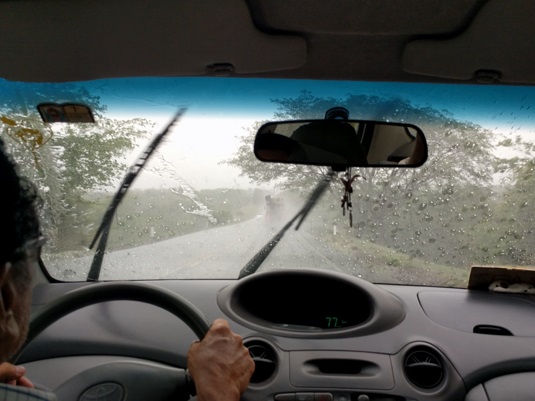
After a stop in Estelí for a local McDonald’s-esque meal at Tip Top, we arrived in Somoto, which is about 120 miles north of Managua and near the Honduran border. There I met Elvin Castellón, the head of APRODEIN (Associación Profesionales para el Desarrollo Integral de Nicaragua), which is Taking Root’s on-the-ground partner organization that oversees day-to-day operations. Taking Root and APRODEIN’s offices are above Elvin’s home. Pictured below is Kahlil and Elvin’s trusty Mahindra 4×4 which is how we got around, including rain-swollen creeks…
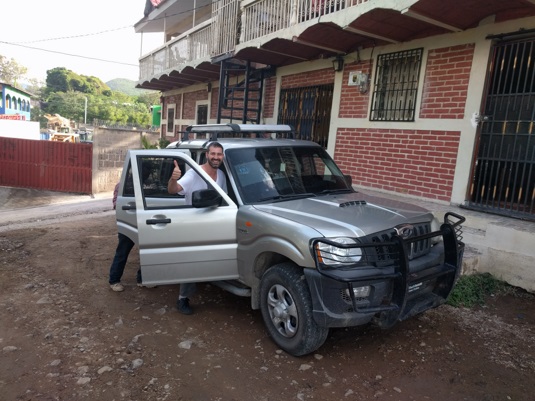
That same afternoon, Elvin, Kahlil, and staff got right to work and took me to meet Roger (pronounced RO-HAIR), a program participant. Here’s Kahlil, Roger, Tim, and around 10,000 of Roger’s seedlings. Roger’s growing four different species including Bombacopsis quinata (spiny cedar) and Swietenia humilis (Pacific Coast Mahogany).

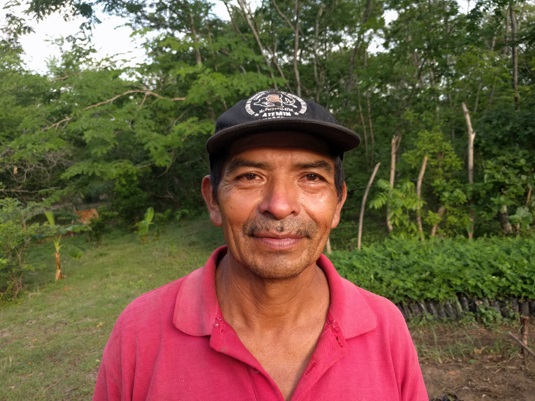
Next we walked over to one of Roger’s fields where some of the seedlings had already been planted.
For the Plan Vivo and forestry geeks, this particular plot was being planted according to Taking Root’s Silvopastoral Planting Technical Specification, or “Tech Spec” which entails a mix of reforestation alongside cattle-supporting pasture improvement.
Not visible in the below picture, and challenging to see in person, are the planted seedlings. This is where the Tech Spec comes into play. Farmers like Roger systematically plant seedlings 1.5 meters apart and in rows which are 3 meters apart. Once one knows this, and hence where the seedlings are supposed to be, they become a lot easier to see. In person, at least. This systematic approach is also extremely useful when it’s time for project staff to verify plantings and monitor progress before farmers receive their payments for ecosystem services (PES), i.e. sequestering the carbon dioxide emissions of those who buy carbon offsets from the project. That includes YOU, Cotappers!
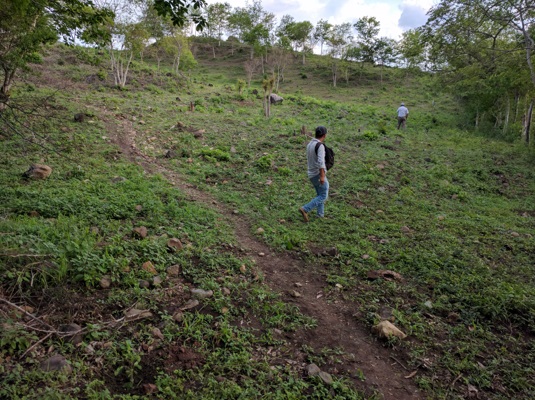
Here’s Kahlil, Roger, and Marcel, who is head of APRODEIN operations for the Somoto region:

As we left Roger, he noted that he had planted these trees the year before:
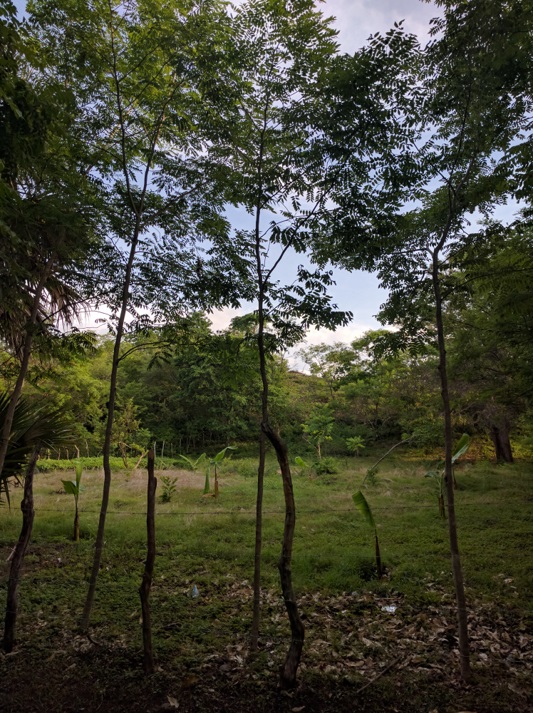
They had to be 20 feet high! I’d heard it before, and had no reason to disbelieve it, that trees can grow around 10 times faster in this part of the world, but seeing is definitely believing.
Then we headed over dirt roads and through the bucolic Somoto countryside…

Then we visited another newly planted area, and Kahlil explained why there were burned areas. Over time, and as the land gets deforested, cattle roam in and graze on ground vegetation. But there’s one type of thorny brush they don’t eat, and over time that stuff gets huge (technical term!) and dominates the moisture, soil nutrients, and sun light that new saplings need in order to… take root. So what farmers do is round it up and burn it before planting seedlings, hence the scorched earth in the picture below. The carbon dioxide released from burning is part of the project’s pre-planting, above-ground biomass calculations and is thus factored into each plot’s, and the project’s overall, net projected carbon sequestration calculations.

I looked down and there was a seedling, looking rather pitiful. What about the cows? Wouldn’t they just come along and eat it? That’s where the Silvopastoral (and other) Tech Specs come in. A major piece of the project’s design, requirements, and management centers on fencing. Taking Root requires that Silvopastoral plots, where livestock will eventually return, be fenced off and that cattle are not allowed in for the first three years after planting. After that, their foliage is safely out of the reach of hungry cow lips. It should be noted here that fencing is as paramount as seedling development, and that Taking Root takes a very active role in buying and distributing both barbed wire and fence posts.
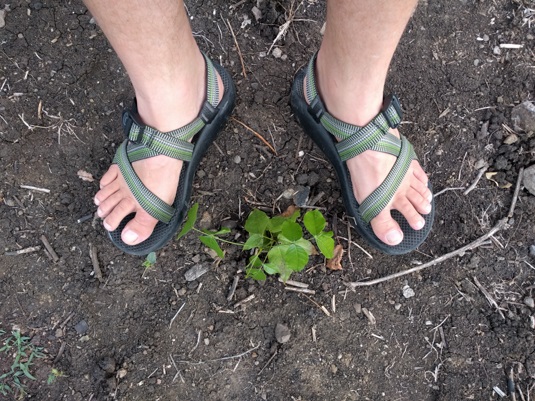
The next day, after a spectacular breakfast (and dinner the night before) from Elvin’s wife Fanny, I took a tour of the Somoto office upstairs. I was pleased to see Kahlil had added his brand new COTAP t-shirt to his Spring collection. Here’s their whiteboard with the Somoto staff’s workplans listed out for the week. By the way, the lettering above used to say “APRODEIN – TAKING ROOT.”
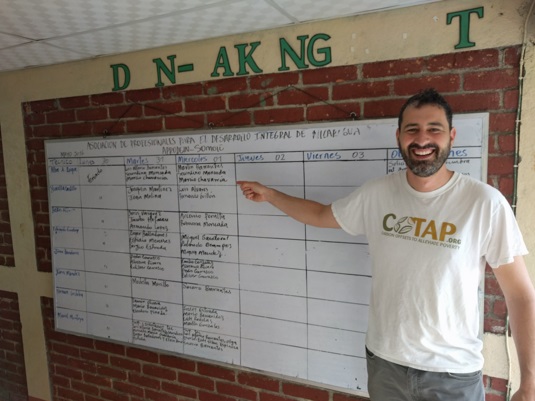
I told Kahlil that it was good to see a contact and feedback poster (below) by the front door of the office. One would assume such a thing of a community-focused carbon project, but I found it interesting when Kahlil explained that, while they’d likely do this sort of thing anyway, it’s actually something that the Plan Vivo Foundation requires of the carbon projects it certifies.
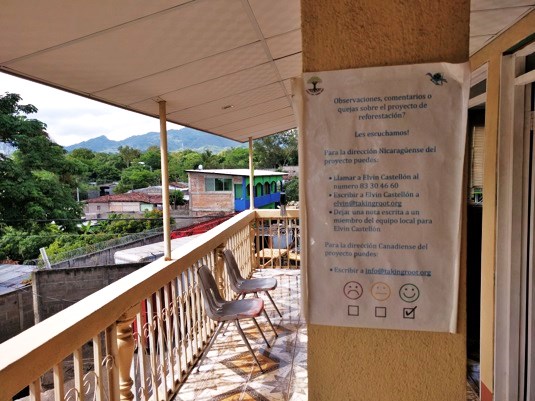
Inside, Elvin with one of his staff.

Next we went out to visit new planting areas, and arrived at the one pictured below that’s being planted according to the Mixed Species Plantation Tech Spec. Note the post and barbed wire fencing on the right behind Elvin, and that’s more of that thorny shrub stuff on the other side of it.

At the end of this field were two guys taking a break in the shade from digging holes for saplings. It was 9:30 in the morning and already getting hot. They were also experimenting with a new gas-powered hole digging auger like this one, which Taking Root bought to explore whether was a sufficient cost-benefit, specifically whether the increased number of tree planting holes per day was sufficient to merit the project formally making augers more available to project participants.
Their initial thinking was probably not. Part of the reason is that, so far at least, with two guys digging holes they were now doing around 300 holes per day with the auger, whereas they averged around 200/day with traditional manual tools. That’s promising, but probably insufficient because the other factor is the very high cost of construction equipment in Nicaragua. While you can pick up an auger at your local Home Depot for about $250, they cost four times that in Nicaragua!
I wondered whether some sort of loan or lease finance (or some other solution) would make a difference in this situation and, if fixed, if it theoretically has the potential to increase the project’s annual plantings by 50%. The thing is, as of June 15th – one month into this year’s first planting season – the project has already planted 500,000 new trees (!!!). So, it seems like the more important bottleneck holding back the project’s reach and scale is the quantity of pre-orders for carbon credits to be created by the upcoming planting seasons’. That’s is the big problem that COTAP’s been trying to crack – getting the word out, making the case, and making it easier for ordinary people and organizations to do business with wonderful, multi-faceted projects like CommuniTree.
Next we went to another plantation that was established last year, and here I witnessed instances newly-planted saplings alongside year-old ones.
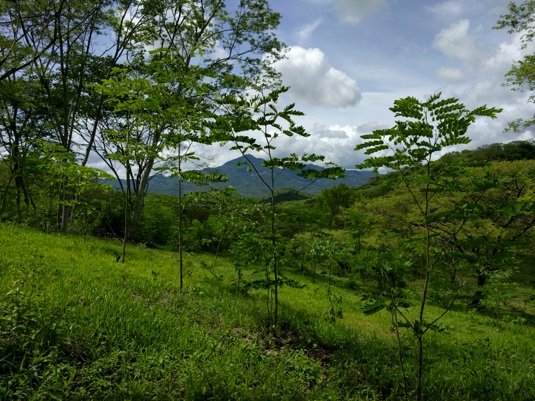
We also met Julio, the son of landowner…
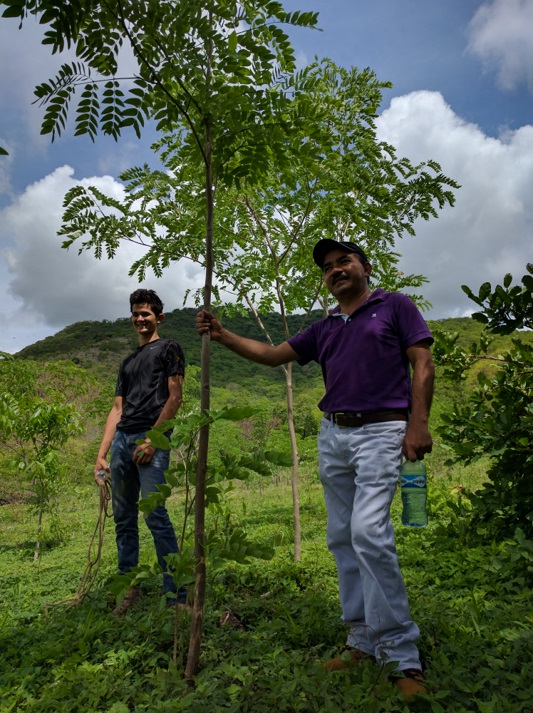
Then on to another plot, pictured below, where there was a lot of active clearing and planting going on. This is where I got a sense of the indirect employment created by the project. For example, through 2015 the project had cumulatively contracted with 296 smallholder families. But it creates employment many times that for seasonal participants paid by the families for performing services like developing seedlings, digging holes, and and planting. The project estimates that during 2014 and 2015 it created 2,645 such jobs, 662 of them for women and 1,982 for men.

At this point Kahlil said, “Hey Tim, want to plant a tree?” Me: “I thought you’d never ask!” So then one of the planters came over with a seedling. It was a quite a process! First, you have to remove the plastic wrapper the seedling is born in. Then you hold it from the side and the bottom so it doesn’t come apart while you put it in the hole. You have to adjust the amount of dirt at the bottom of the hole a little bit because they’re not all the same depth and you want the bottom of the seedling’s little teeny tiny baby tree trunk to be level with the ground. Then you hold it in place while you fill in the rest of the hole with the dirt. There needs to be a little layer of dirt on top of the root system to seal it so that moisture doesn’t get lost. You also need to pack the dirt around it enough so that it’s sturdy, but not too compact because that prevents needed air from getting to the roots. Whoah!

On the way back to the truck, I got a picture of this local seedling delivery vehicle..

Next we went to a year-old plot owned by a fellow named Alberto. One interesting thing seen below is the substantial variability in growth that can occur between two trees of the exact same species and planted at the exact same time. Here, the super tall tree is the exception, kind of like a teenager that hit their growth spurt before the others. Sometimes it’s just that, but it can also be because it had better genes than the other saplings, or because it was planted in an above-average piece of soil, or both.
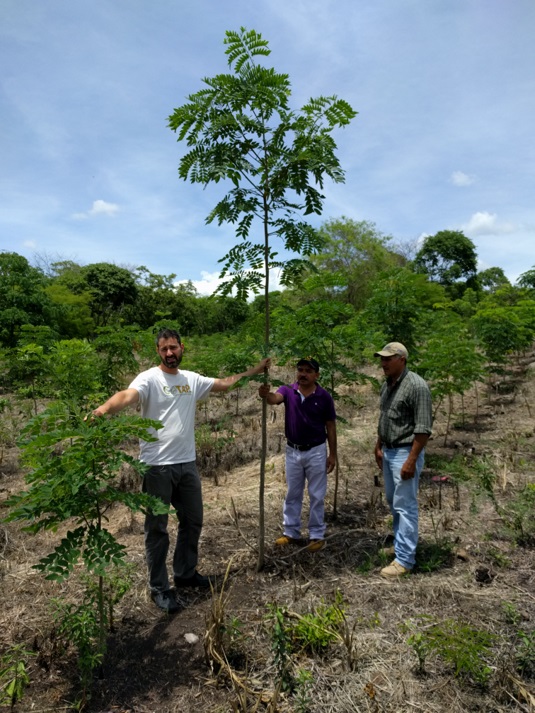
Then we drove about an hour and a half on dirt roads and through the rain to Limay, where the project started back in 2010. Taking Root’s Limay office also serves as a hostel for guests. The middle of nowhere and then some, yet fantastic hi-speed internet/wifi, fantastic Nicaraguan coffee always on tap, and a bar across the street serving up ice-cold Toña beers. Here’s my room for the next two nights. Great mattress and pillow plus a fan. Luckily mosquitoes weren’t an issue, but unfortunately a rooster lived about 2 inches on the other side of the window. That wasn’t an issue either… until about 4:15am. Kahlil said to bring ear plugs, and I didn’t ask him why. That was why! Good call!
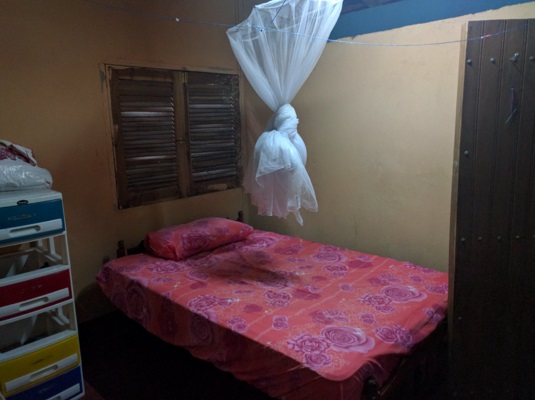
The next morning about 9:30 was another first for me: witnessing project participants coming into the Limay office to collect their “pagos por servicios ambientales” or payments for ecosystem services (PES). For planting and maintaining trees that will sequester the carbon dioxide emissions that have been emitted by those who buy carbon credits from the project (aka YOU the Cotappers!). Below is a participant signing for his check, overseen by Elsa. She manages operations for the Limay portion of the project.
I didn’t ask the guy his name or how the payments were benefiting him, I felt it was intrusive enough to be taking a picture. I did explain to him why I was there – visiting the project on behalf of COTAP, which helps people and businesses address their unavoidable CO2 emissions through this and other projects. I also thought it was cool his boots had spurs on them – he’d come in to pick up his check… on a horse!
Even though this part of the process is the core of why I do what I do – climate change is a historic opportunity to correct global economic inequality – I’d never seen it in person and it brought things full circle for me. Not long before this guy got his check, a Cotapper from Edinburgh, Scotland offset $100 and 10.10 tonnes through COTAP’s four projects. That means 2.53 tonnes $22.73 for this project, 60% of which gets paid out to people like this guy. And not long after this picture, another Cotapper in Arlington Heights, Illinois offset 4 tonnes overall, 1 of them to this project, and $5.40 to people like him. Last year, the average PES check was $211.78 (annual report Appendix 5).
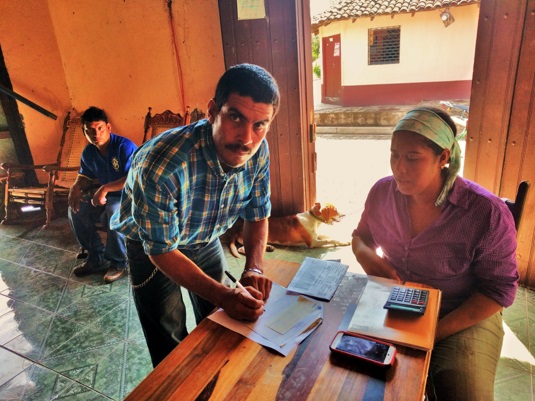
Later that morning we hit the road to meet more farmers and see more trees. We arrived at Cesar’s place. I assumed this was his house but didn’t confirm it…
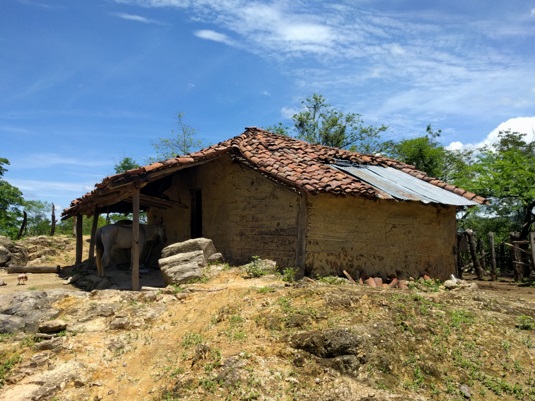
We kept on the trail past the house. Either shortly before or after the below picture was taken, we came upon a mango tree that had… mangos in it. And a bees nest. Elvin decided to harvest a couple of mangos with a stick. As part of that process, he disturbed the bees nest and within 5 seconds I believe I was stung in the back of the head by a bee and bitten on my big toe by some sort of ant (Kahlil had, multiple times, urged me to wear shoes instead of my sport sandals). Upon further inspection, I believe the toe was also a bee sting because I pulled out what appeared to be a stinger. In any event, I was thankful that it wasn’t a bullet ant, known to exist in Nicaragua and so-called because when it bites you the pain is as if you’ve been SHOT, and it lasts for 24 HOURS!
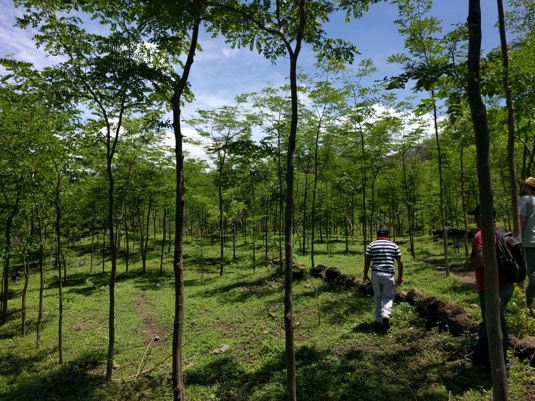
Anyway, after I got over that I truly marveled at what an established and maturing reforestation plantation looked like. Roaming the plantation, machete in hand, was Cesar Lopez:
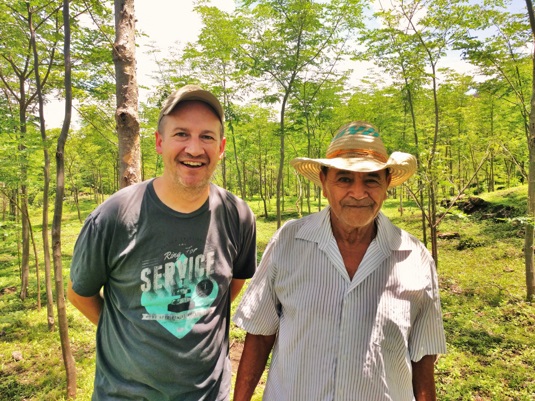
As with the other smallholders I met, I did my best to introduce myself and explain why I was there… capping it all off with a disarming “Diacachimba!” to smooth over any awkwardness. “Diacachimba!” is a super-Nicaraguan and exuberant saying that means many things to many people, but (and especially for folks who know me from business school) it’s basically the equivalent of saying “BOOM!” It was pretty much always well-received and elicited a smile.
It turns out that Cesar is one of several unofficial spokespersons for the project, and recently did this interview (Spanish only) with Randolph:
Among other things, Cesar shared that he had planted about 6,000 trees as part of the program. Without hiring available seasonal labor. Amazing! I had fun explaining to Cesar that I had two trees, one in the front yard and one in the back. Moving on, I decided to mix things up and ride in the back of the Mahindra with Elsa and Randolph of the Limay team. Along the way, I saw lots of fencing and boundary plantings (another Tech Spec that is exactly what it sounds like) which included some new replacement saplings.

Then we stopped again at the plot below. It was time for a demonstration of Taking Root’s monitoring platform, which it refers to as its Smallholder Carbon Project Information Management System (SCPIMS). Last Fall, Taking Root’S SCPIMS actually won an award for best monitoring from the Rainforest Alliance’s Eco-Index.
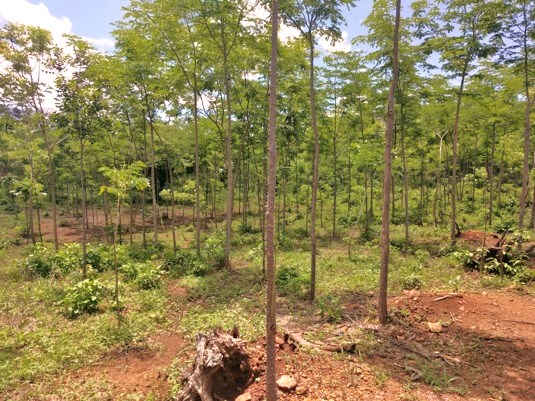
When it’s time to monitor a plantation, monitoring staff pull it up using Taking Root’s proprietary smartphone app:
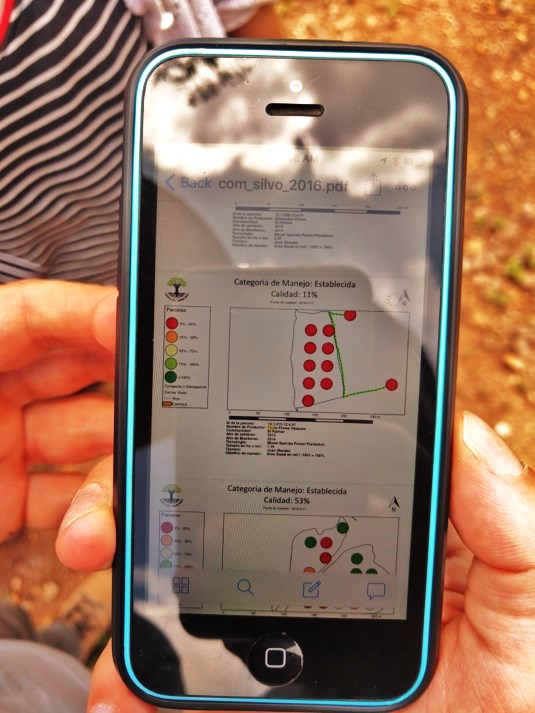
The app shows them how the plot is doing based on the previous monitoring, with 5 different plot quality rating levels. The system randomly selects a set of sample plots within the plantation to check up on. For each random sample plot, two technicians record the progress of every tree within a 10 meter radius of that given plot’s central tree, which they locate using GPS. Sometimes those central trees have paint markings. One technician does the measuring and calls out the results to the other, who inputs it on their smartphone. Species and diameter a breast height (dbh) are recorded and uploaded to Taking Root’s central cloud-based database for analysis, and their system allows for many technicians to be remotely uploading data at once. Here’s Randolph entering the data:

And Kahlil doing the measuring. Also note the paint marking on the tree…
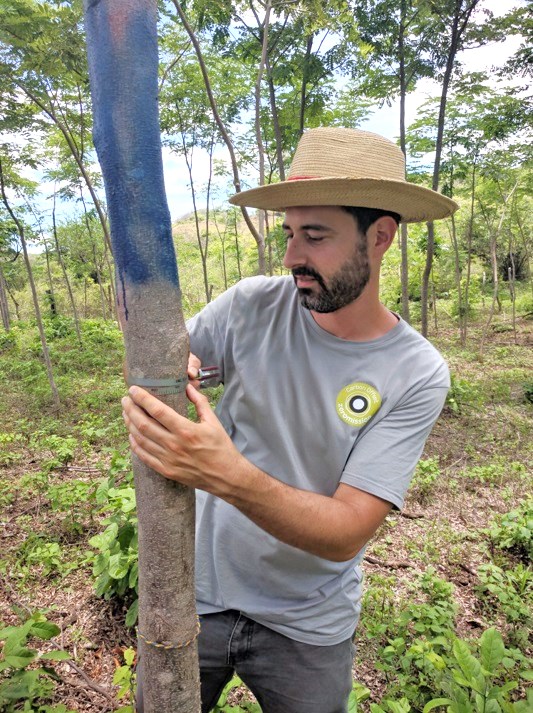
Then it was time for lunch back at the office in Limay…
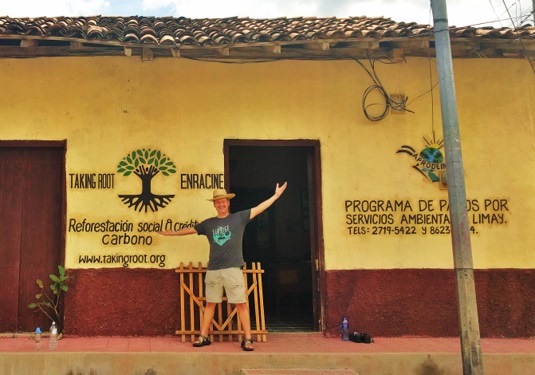
Then it rained. A LOT! Yay!

Mural on the side of the office, with themes of working, dancing, studying, playing, and having a good time…
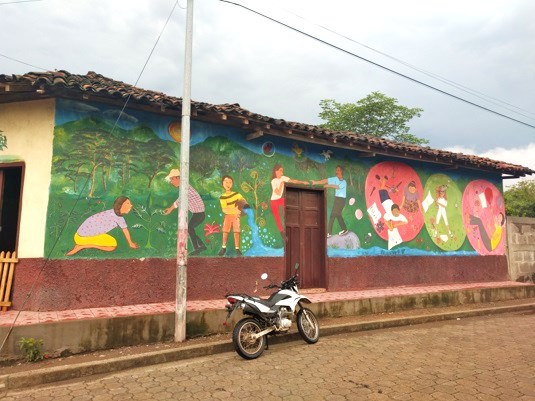
Also at the Limay office was a woodshop where they’re experimenting with various wood products that will eventually be made from periodically-harvested trees harvested. Right now they’re doing cutting boards and other kitchen-related items. You can read more about Taking Root’s efforts around wood products and charcoal on their blog, and its also important to note here how this fits in with long-term net CO2 sequestration, which you can learn more about through their blog post.
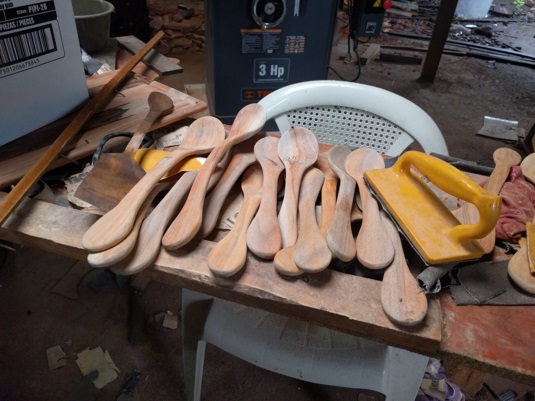
After the rain, the Mahindra rolled to the final plantation, one of the first from the project’s humble beginnings in 2010. Here it is shortly after pulling a Toyota out of a swollen creek.

On the way we passed a field that wasn’t part of the project:

…that empty field served as the “before” picture of the 2010 Taking Root plantation we arrived at next:
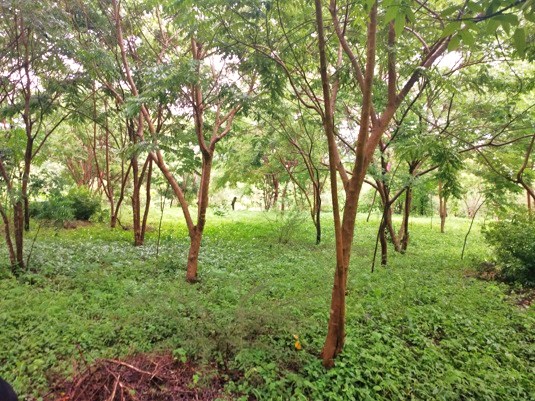
Something I noticed for the first time was that, in this older plantation, you can see young saplings growing. But they weren’t planted by the farmer participating in the CommuniTree project… they had been planted by the trees themselves! Here I could see something Kahlil shared earlier in the trip, a quote he loves, something like: “A good forester never needs to replant.”
In this new forest was the occasional freak tree which was growing bigger and faster than the rest, here’s one of them.

The look on Kahlil’s face was priceless, as if he was wondering “Did we really do this?”

Transfixed and awestruck! It was pretty much my same reaction, not only to that one tree but also to every aspect of my entire CommuniTree project visit!
Last but not least, you can offset some or all of your annual CO2 emissions specifically through through Taking Root’s CommuniTree project in Nicaragua (as opposed to all 4 COTAP projects) by donating any dollar amount through the PayPal button immediately below. It’s $9.90 per tonne and tax-deductible for U.S. residents.
If you prefer to calculate your footprint and/or offset by the tonne, you can do so here.
Diacachimba!
TW


